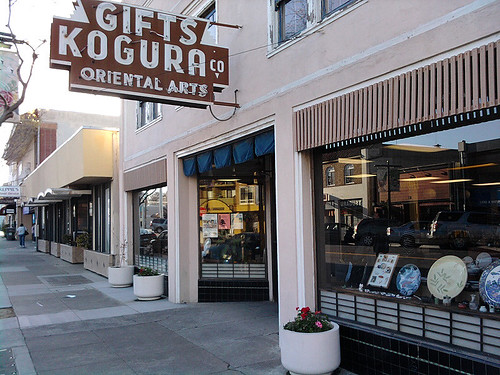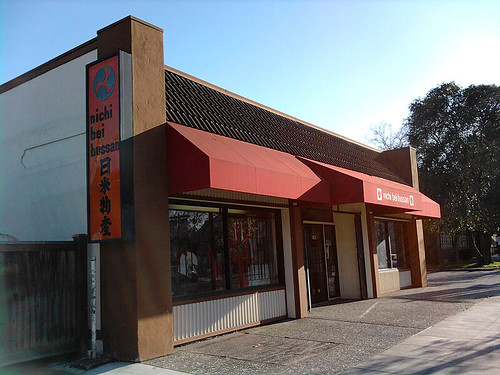But there was once a point in history when Japantowns served an important function as the social epicenter of the newly immigrated population. Over the years, this function has become less crucial as the Japanese integrate into the general U.S. population. Now they are more like "the place with that new anime store." There are actually only 3 remaining official Japantowns in the U.S.: Los Angeles, San Francisco and San Jose. I have had the good fortune to live near all 3 during my time in California.
San Jose's Japantown (or Nihonmachi, (lit. 'Japan city') as it is sometimes called) may be the most unassuming of the 3 remaining. It does not have the Hollywood star power of Los Angeles' Little Tokyo (F&F: Tokyo Drift) or the upscale decor of San Francisco's J-town. Frankly, I was a little surprised that there even IS a Japantown in San Jose. But outward appearances belie its unique charm.
This past Saturday, I went down to take a closer look at the residents of San Jose's Nihonmachi.
KOGURA COMPANY

Kogura Company is the mom-and-pop store that stocked Japanese products when you were a kid- assuming that you grew up near such a store. I'm fairly sure that I saw Mom and Pop working the store while I was there.
The maroon-hued sign outside still reads "Oriental Arts" despite the general distaste shown for such term by the anti-oriental Asian population. But it is fairly accurate. Kogura Co. carries the 'fancy' products that you might need for home decoration and special occasions: Japanese dolls purchased to celebrate the birth of a child, doll display cases, vases for flower arrangement, and Zojirushi rice cookers and water heaters- staples in any Japanese home. I even saw a bagged giant Kewpie doll in one of the aisles.
If you're wondering why I was in there, I was scouting out prices for the doll display cases (which look very nice with vinyl toys inside of them).
NICHI BEI BUSSAN

Nichi Bei Bussan stands alone, away from the relative bustle of central Nihonmachi. Although it is a quiet stop for Japanese goods and martial arts equipment these days, the high ceilings and peculiar scent of wood and Japanese newsprint unmistakeably mark this store as a place where things happened back in the day. You can almost feel the Issei population milling around the counters, picking up new American products and Japanese necessities alike. Near the back of the store, a pair of small glass cases contain various memorabilia from NBB's history, including several customer registry books.
To my amazement, I discovered that this company has been in operation for over 100 years- the first store was opened by Shojiro Tatsuno in San Francisco in 1902. Surviving the 1906 earthquake, Great Depression and Japanese internment of World War II, this San Jose store (opened after WW2) is unfortunately all that remains of the family business. While it may not be the social center that it once was, the significance of Nichi Bei Bussan to the Bay Area Japanese community is undeniable.
Visit their website and read more on the history of the store here.
And, no, they didn't have any Bullmarks in the back. I checked.

I used to love to visit Japantown when I lived in San Jose a few years back.
ReplyDelete